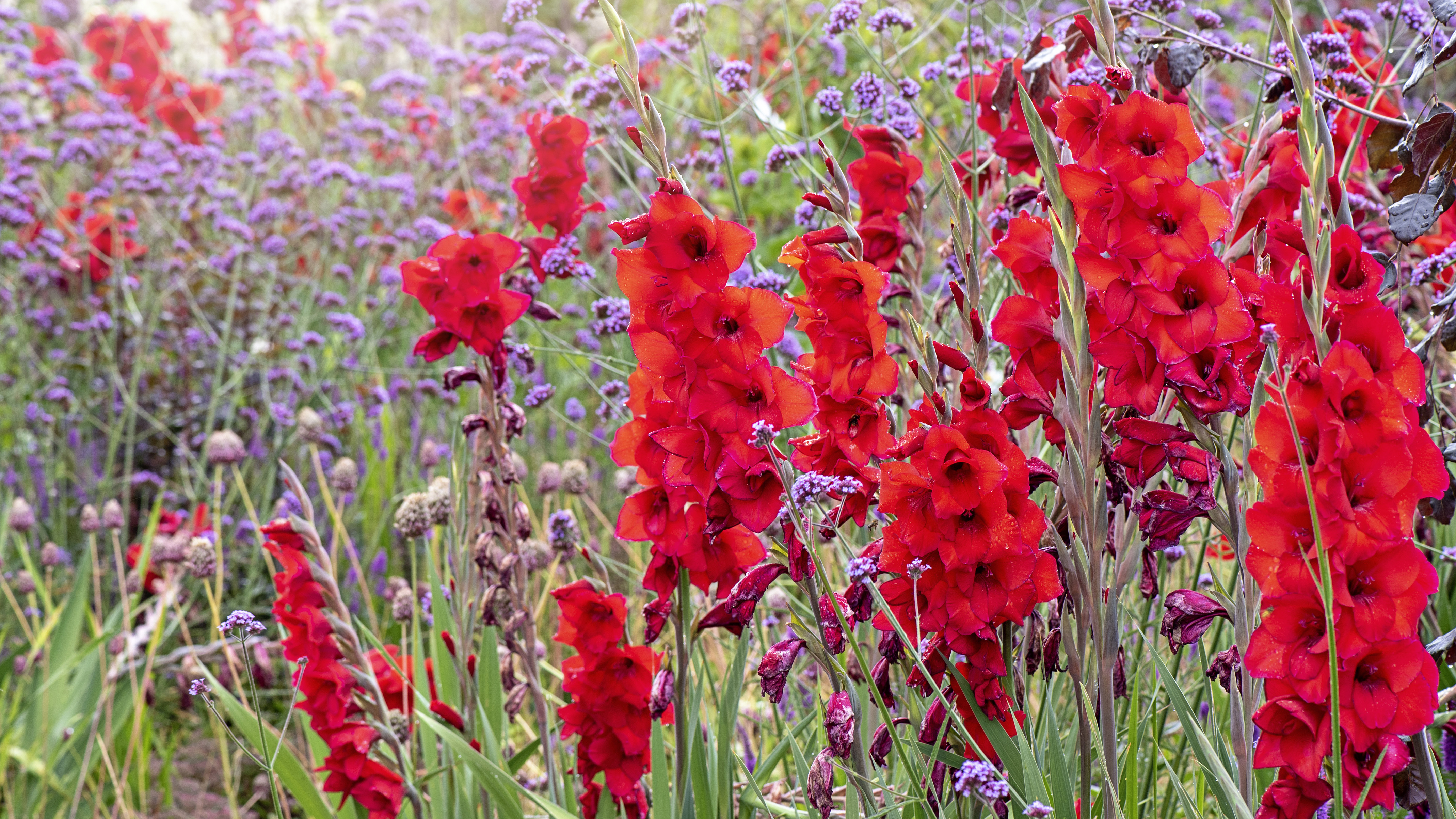When do gladiolus bloom? And what to do to for show-stopping flowers
If you are wondering when your gladioli will flower, discover the answers here


Wondering when gladiolus bloom? It's no wonder – these exuberant blooms, particularly when planted in swathes, can transform borders with their riotous colors.
But if your gladioli seem to be slower to flower this year, or if you're a first time gladiolus grower, you may be impatiently waiting for them to put on their show. The answer is fairly simple: gladiolus bloom about 10 to 14 weeks after you have planted them, usually from late June to early July, though you can get them to flower earlier in certain conditions, right through to fall.
Below, we answer your questions fully so that you can work out more accurately when your gladiolus will bloom.
When do gladiolus bloom?
Think back to when you planted your gladioli. This will help you work out when blooms will start to appear.
If you can't remember exactly, it is likely to have been from around March or April.
'From the date you planted your gladioli, count on 10 weeks to get an idea of when they will bloom. They should appear from 70 to 100 days after you planted them,' says Homes & Gardens' Editor in Chief Rachel Crow. 'So if you planted them on April 1st, reckon to start seeing them appear from June 10th through to July 8th.
'And if you have planted corms in succession for continuous color throughout the summer, obviously don't expect them to flower all at once.'
Design expertise in your inbox – from inspiring decorating ideas and beautiful celebrity homes to practical gardening advice and shopping round-ups.
You can get gladioli to flower faster than 10 weeks. 'To do this, you need to plant corms deep in seed trays in a single layer, keep the soil moist, then put them in a warm greenhouse or propagator. Once they have rooted and shooted, transfer them outside in warm soil.
Why aren't my gladiolus blooming?
There are a number of reasons why your gladiolus might not have bloomed yet, or at all.
- The corms have gone bad: gladioli corms need to be stored in a clean, dry space before planting. Put diseased ones in the ground and they won't produce blooms. The solution is to take care with storage next year and try again.
- The corms were planted too early: put corms into ground that then freezes and you may find they have cracked and become moldy and not grown at all. Next time: plant out after the last frosts.
- They are in the wrong position: gladiolus don't like being flooded or too much shade; your next crop of gladioli need to be in well-draining soil and full sun to bloom.
- The soil is compacted: put simply, if the soil is too dense, the buds won't be able to emerge through it to grow into adult plants that can flower. In future, loosen soil before planting and avoid walking over borders where corms are buried.
- There's a thrip infestation: these tiny bugs will ensure your flowers die before they can bloom. Try neem oil to ward them off before resorting to chemical pesticides.
- Animals have eaten the corms: everything from moles to mice will eat your gladioli corms, so protect them as well as you can with wire netting and other pest control.
- They may be too old: gladiolus corms do produce new flowers year after year, but will eventually run out of steam over time. For this reason, it's wise to keep planting new corms year on year.
- The corms are too small: by next year, with some care and feeding, the corms should produce good growth and blooms.
- They've been overwhelmed by lawn fertilizer: gladioli don't like high nitrogen feed, so if you've been careless with your lawn feed, your plants may not flower. Try feeding the gladioli with a high phosphorus fertilizer to encourage flowers.
How long do gladiolus flowers last?
Gladiolus flowers last around a week, though they can last for two weeks. The lower buds open before the upper ones. This short flowering period is why many gardeners plant gladiolus corms in succession in spring and into summer, usually once every week or two, in order to get a continuous show.

Lucy Searle has written about interiors, property and gardens since 1990, working her way around the interiors departments of women's magazines before switching to interiors-only titles in the mid-nineties. She was Associate Editor on Ideal Home, and Launch Editor of 4Homes magazine, before moving into digital in 2007, launching Channel 4's flagship website, Channel4.com/4homes. In 2018, Lucy took on the role of Global Editor in Chief for Realhomes.com, taking the site from a small magazine add-on to a global success. She was asked to repeat that success at Homes & Gardens, where she has also taken on the editorship of the magazine.